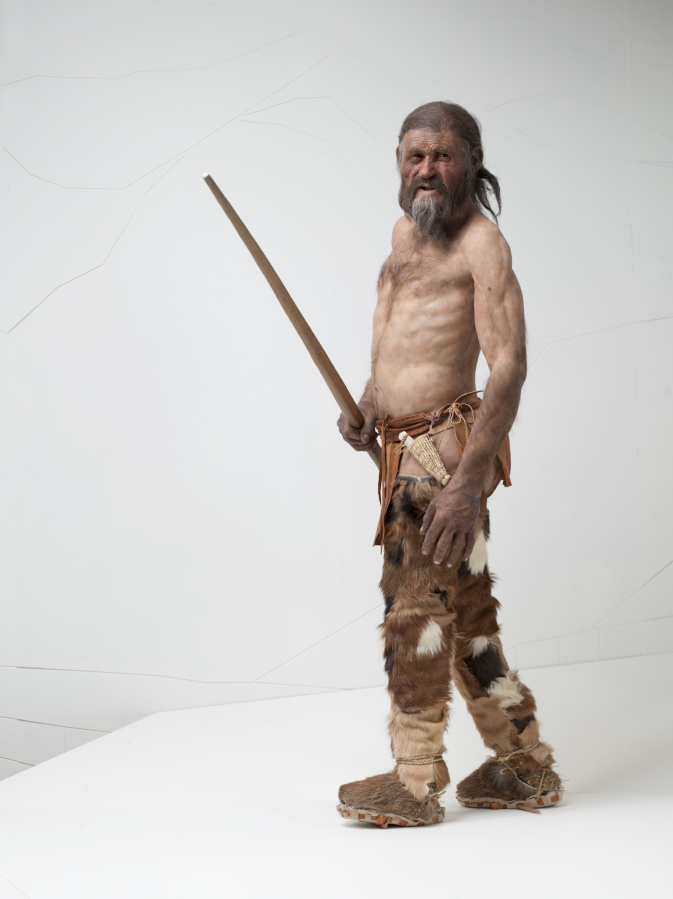NEW YORK (AP) — Oetzi the Iceman has a new look. Decades after the famous glacier mummy was discovered in the Italian Alps, scientists have dug back into his DNA to paint a better picture of the ancient hunter.
They determined that Oetzi was mostly descended from farmers from present day Turkey, and his head was balder and skin darker than what was initially thought, according to a study published Wednesday in the journal Cell Genomics.
Oetzi, who lived more than 5,000 years ago, was frozen into the ice after he was killed by an arrow to the back. His corpse was preserved as a “natural mummy” until 1991, when hikers found him along with some of his clothing and gear — including a copper ax, a longbow and a bearskin hat. Since then, many researchers have worked to uncover more about the mummy, which is displayed at the South Tyrol Museum of Archaeology in Bolzano, Italy.
An earlier draft of Oetzi’s genome was published in 2012. But ancient DNA research has advanced since then, so scientists decided to take another look at the iceman’s genes, explained study author Johannes Krause, a geneticist at Germany’s Max Planck Institute for Evolutionary Anthropology. They used DNA extracted from the mummy’s hip bone.



